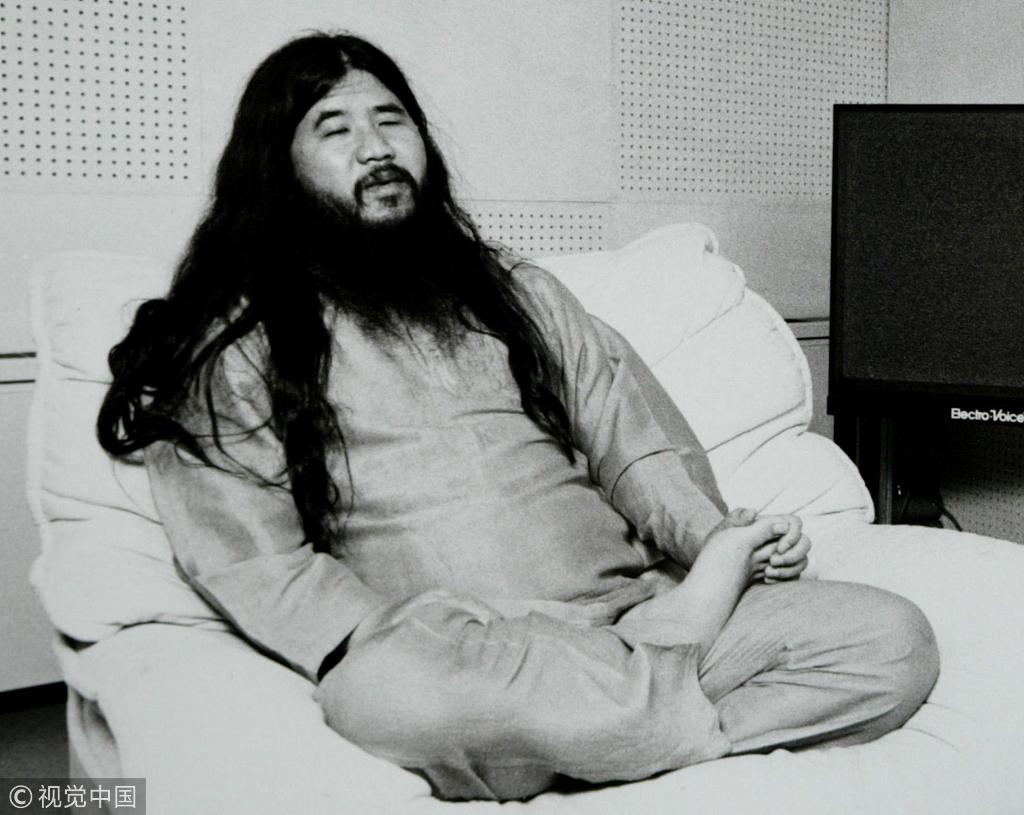
(Photo: VCG)
The leader of the Japanese doomsday cult that carried out a deadly 1995 sarin attack on the Tokyo subway was executed Friday along with six of his followers, decades after the shocking crime.
Shoko Asahara, the charismatic virtually-blind leader of the Aum Shinrikyo sect, has been on death row for more than a decade over the attack, which shocked the world and prompted a massive crackdown on the cult.
"Seven Aum members were executed, they include Shoko Asahara," a justice ministry official told AFP.
The hangings are the first executions in connection with the nerve agent attack, which killed 13 people and injured thousands more. A further six cult members remain on death row.
Some of those affected by the attack welcomed news of the executions.
"When I heard the news, I reacted calmly... But I did feel the world had become slightly brighter," said Atsushi Sakahara, a film director who was injured in the sarin attack at Tokyo's Roppongi station.
"I've been in pain for years," he told AFP.
"It will be impossible to ever forget the incident, but the execution brings a kind of closure."
Foaming at the mouth, bleeding
The attack during the capital's notoriously crowded rush hour paralysed the Japanese capital, turning it into a virtual warzone.
Injured people began staggering out of the underground struggling for breath, with watering eyes as the attack unfolded.
Others keeled over, foaming at the mouth, with blood streaming from their noses.
The sarin had been released in liquid form on five subway carriages at different points throughout the network.
The first sign of it was a smell similar to paint thinner, but soon commuters began cough uncontrollably, recalled Sakae Ito, who was on the crowded Hibiya line that day.
"Liquid was spread on the floor in the middle of the carriage, people were convulsing in their seats. One man was leaning against a pole, his shirt open, bodily fluids leaking out."
Police were first alerted just after 8:00am and panic soon set in, with subway workers screaming at people to evacuate and passengers convulsing on carriage floors.
The Japanese Self-Defense Force was called in and descended into the depths in hazmat suits and gas masks to assist the injured and deal with the poison.
Though concerns about the Aum had already been raised, the attack prompted a massive crackdown on the cult's headquarters and the arrest of Asahara and other group members.
He was sentenced to death after a lengthy prosecution during which he regularly delivered rambling and incoherent monologues in English and Japanese.
The hangings Friday are the largest simultaneous execution in Japan since 1911, when 11 people were hanged for plotting to assassinate the emperor.
Born Chizuo Matsumoto in 1955 on the southwestern island of Kyushu, Asahara changed his name in the 1980s, when the Aum cult was being developed.
Virtually blind, he was seen as a charismatic speaker who cloaked himself in mysticism to draw recruits including doctors and scientists to the doomsday cult he developed in the 1980s.
The Aum cult, now renamed Aleph, officially disowned Asahara in 2000, but it has never been banned and experts say the former guru retained a strong influence.
Despite the horror that persists over the Aum's subway attack and other crimes, some experts had warned against the execution of Asahara and his acolytes.
They fear his death may trigger the naming of a new cult leader, possibly his second son.
And the execution of Asahara's followers risks elevating them to "martyrs" in the eyes of remaining cult adherents, warned Taro Takimoto, a lawyer for relatives of cultists, in an interview with AFP earlier this year.
"We should have them talk until they die a natural death so that they help prevent a recurrence," he said.


